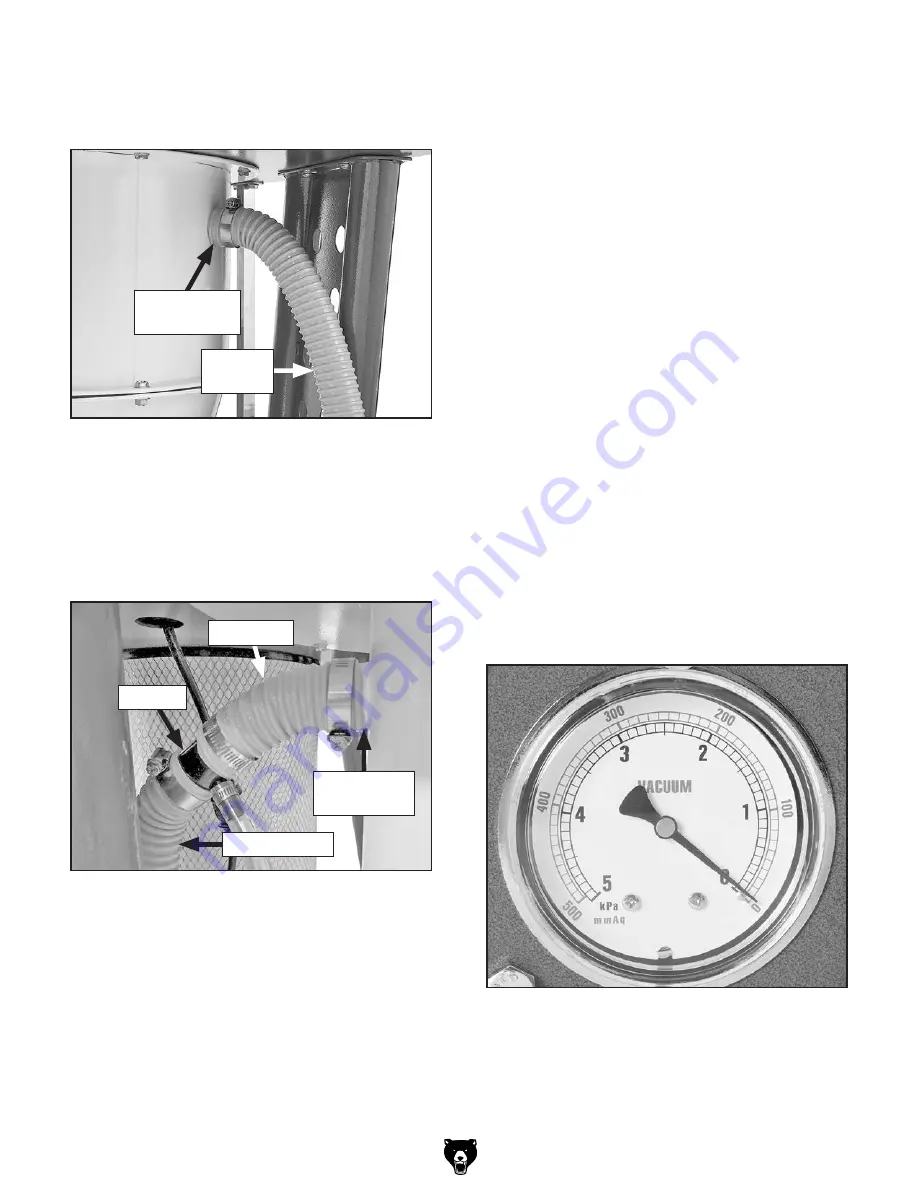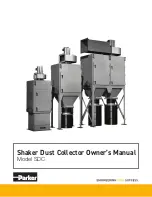
Model T32713 (Mfd. Since 08/21)
-3-
7. Loosen hose clamp securing vacuum hose to
intake barrel port and remove hose from port
(see
Figure 7).
8. Slide other end of dust hose from Step 4 over
intake barrel port (see
Figure 8).
9. Slide vacuum hose over other port on T-fitting
(see
Figure 8).
10. Adjust and orient hoses and clear tube as
needed to eliminate any kinks, then tighten
all (5) hose clamps to secure connections.
11. Slide pressure gauge mount to position where
it is easy to read, and secure in place with (2)
flange nuts removed in
Step 5.
12. Connect dust collector to power.
Figure 7. Vacuum hose attached to intake barrel
port.
Vacuum
Hose
Intake Barrel
Port
Figure 8. Dust hose placed over intake barrel
port and vacuum hose over T-fitting port.
13. Cover intake dust ports and turn dust collec-
tor
ON. Pressure gauge should indicate at
least 200mmAq or 2kPa.
— If gauge indicates at least 200mmAq or
2kPa, negative pressure kit has been
installed correctly and filter is operating
efficiently.
— If gauge indicates less than 200mmAq
or 2kPa, confirm all hose and tube con-
nections are tight and there are no kinks
that disrupt air flow. If gauge still indicates
less than 200mmAq, refer to
Reading
Pressure Gauge to service filter as
required.
Reading Pressure Gauge
The Model G0860, G0861, and G0862 use a
handle and internal paddles to remove the dust
buildup from the filter. The negative pressure
gauge will help determine when a more thorough
cleaning is needed and whether the filter should
be replaced.
If the operating pressure on the pressure gauge
drops below 200mmAq or 2kPa (see
Figure 9),
remove and clean the filter, as described in the
Owner's Manual.
If the operating pressure drops below 150mmAq
or 1.5kPa, and cleaning does not improve perfor-
mance, replace the filter.
Figure 9. Pressure gauge values.
Dust Hose
T-Fitting
Intake Barrel
Port
Vacuum Hose












